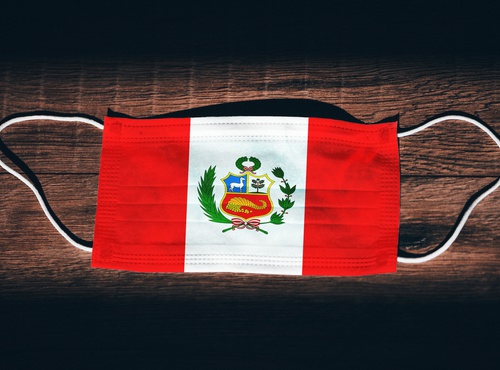
Written by:undefined undefined
Published: 03-06-2022
For many people, it’s football or tango that springs to mind on a visit to Argentina, however its yummy food that has to be amongst that list. Argentinian food is incredible, especially if you enjoy eating meat. Argentina is home to world-class beef and some of the tastiest dishes in South America. Here are our recommendation for what to eat in Argentina.
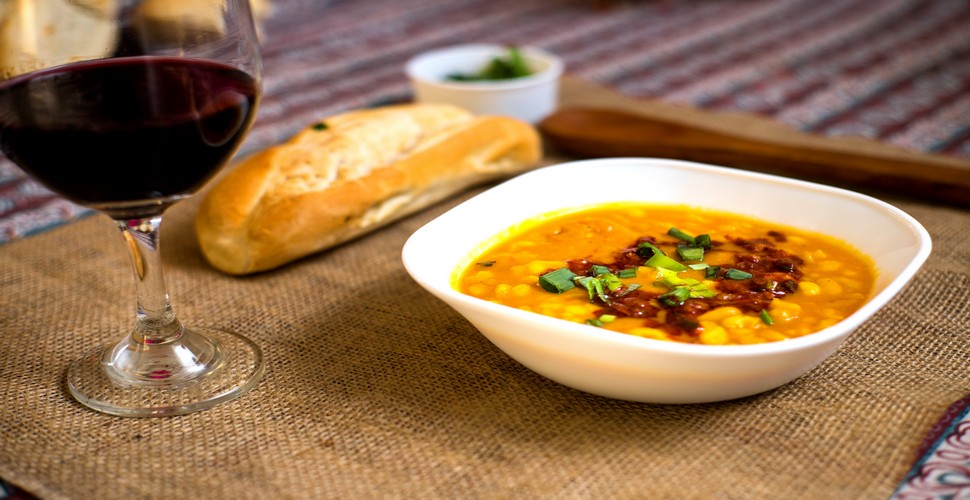
Locro and Malbec
Asado
In English, asado is called a barbecue, but in Argentina, the Asado is so much more. It helps that Argentina has more cattle than people living there! The Asado is a way of cooking as well as a social event and also happens to be Argentina’s national dish. Combining delicious meat with fire and a grill, popular meats include pork, chicken, sausages, and churrasco. Fine asado cooking uses a parrilla, a large iron grill designed for optimal barbecuing. These dishes are so tender, juicy, and delicious that vegetarians may even be tempted to change their ways!
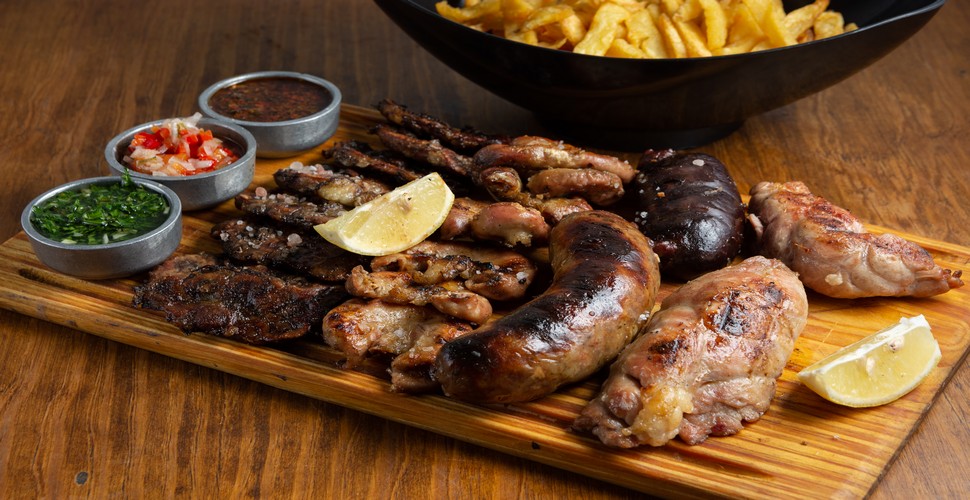
Asado
Argentinian Empanadas
Empanadas are one of Argentina’s most popular street foods. Also, typically served as an appetizer. They were introduced by Spanish immigrants during the 16th century and consist of stuffed dough pockets, with different fillings and usually baked or fried. The different fillings include meats such as chicken or beef and veggies. If you’re looking to explore this Argentine food, there are a variety of delicious ways to stuff an empanada; Beef, Chorizo, Pork, Turkey Chicken, Fruit, Beans, Seafood, Cheese, in fact virtually ANYTHING can be stuffed into an empanada! These Argentine pasties are excellent because they allow you to get creative!
Choripan
A Choripan is a chorizo sandwich. Chorizo is grilled, split down the middle, and served on a baguette or bread roll, similar to the classic hotdog.
If you want your taste buds to explode, slather your Choripan with the ever-present chimichurri. A garlicy sauce similar to pesto. Choripans may also be served with salsa. Choripans are commonly found at sports venues and street festivals and a popular lunchtime choice.
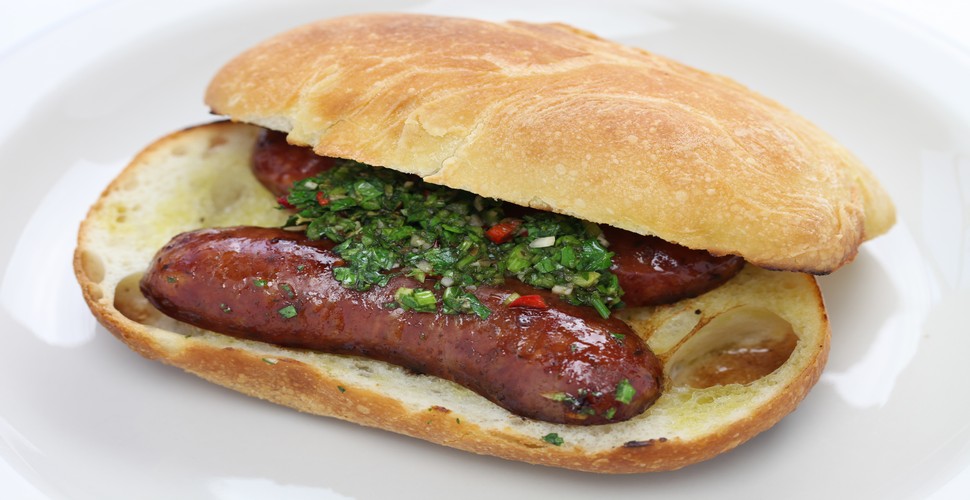
Choripan with Chimi churi
Chimichurri
Chimichurri is Argentina’s distinctive pesto- like accompaniment. It’s served on grilled meats and used as a dipping sauce, also commonly found on choripans and empanadas. There isn’t a fixed recipe for chimichurri as every Argentinian likes to add his or her own flare to the sauce. The sauce incorporates parsley, garlic, olive oil, oregano, vinegar, and chili peppers, and you will see chimichurri at an asado or served with your bread basket at a restaurant.
Milanesa
Take some meat, soak it in batter, then fry it up. What do you get? A delicious Milanesa.
This breaded Milanesa may be served on a sandwich or as a snack and is generally made from silverside yet it may also be made using chicken breast. You can add flavor by ordering it with many different toppings. Milanesa a Caballo is a traditional milanesa dish is topped with two fried eggs and served with fries. A Milanesa Sandwich, take it to the next level by making it into a sandwich! Add lettuce, tomato, cheese, and serve in a hearty roll. Milanesa a La Napolitana.
Add some Italian essence to your milanesa by topping it with prosciutto and fresh mozzarella, tomato sauce and grill until cheese turns golden brown.
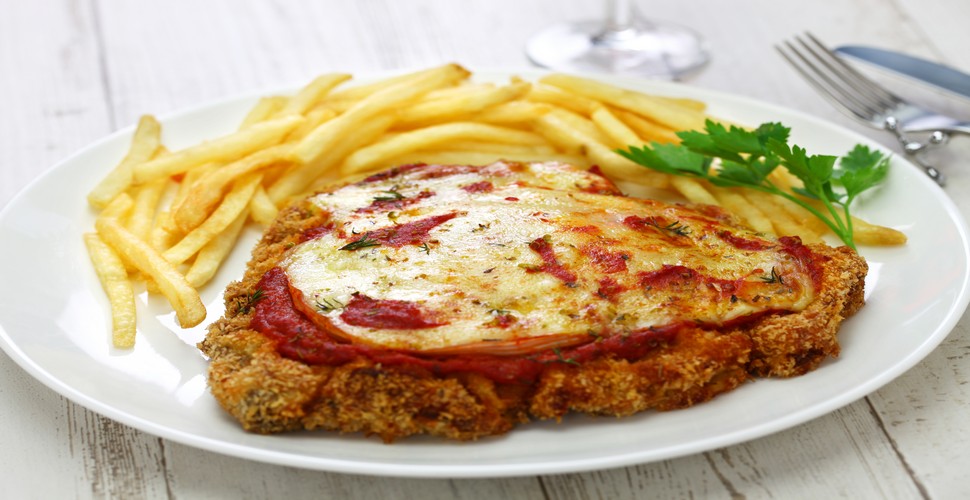
Milanesa a La Napolitana
Matambre Arrollado
This hearty Argentine food comes from the beef cut below a cow’s ribs and is difficult to find outside of Argentina, so flank steak is a common alternative. Matambre combines thinly sliced meat with a variety of ingredients including mixed vegetables, hard-boiled eggs, red peppers, and olives, usually seasoned with garlic, coriander and olive oil. All the ingredients are mixed with the beef and cooked together asado-style. Matambre arrollado creates a flavorsome and filling meal that kills all of your hunger as its name suggests!
Argentinian Pizza
Argentinian pizza, or Fugazza, may look like your average pizza, but it definitely isn’t! with a thick crust made from airy dough. Traditional Argentine-pizza is light on the sauce and heavy on the cheese. If it’s not dripping in cheese, it’s not a Fugazza. Pizzas usually come with a variety of topping selections, including Calabresa (spicy pork sausage) Jamón y morrones (ham and bell peppers), spinach and bechamel
Muzza is the classic Argentinian pizza style. It’s loaded with cheese and a small amount of tomato sauce, then finished with olives and oregano.
Fugazzeta Argentine Pizza is onion-based and loaded with grated mozzarella.
Pizza a La Piedra is baked on a stone in a wood-fired oven. Unlike traditional Argentine pizza, it has a thinner crust and dripping in tomato sauce.
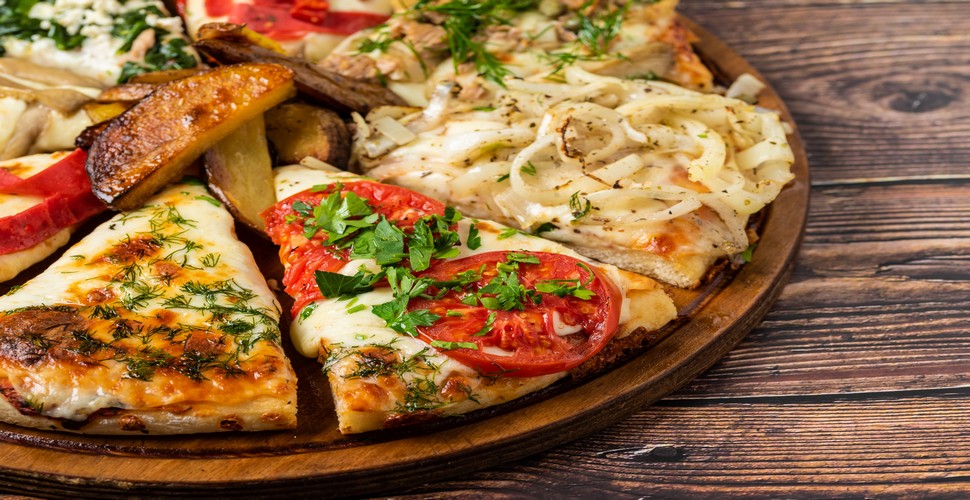
Argentine Pizza Toppings
Locro
Locro is a national Argentine dish. If you are visiting Argentina around May 25, you will find yourself eating locro. This hearty and tasty stew is made using white corn, beef or pork, tripe, and red chorizo. Vegetables like beans, squash, and pumpkin are also added.
Humitas
Corn and milk are blended to create a delicious dough. It’s combined with onions, spices and goat cheese for extra flavor. The mixture then gets folded into a corn leaf and steamed or boiled. Humita can be a snack or a main dish and is also a common empanada filling. Humita is very popular around the Andean region of South America. However, they’re not usually stuffed with meat. Instead, these Argentine delicacies are filled with cheese or vegetables.
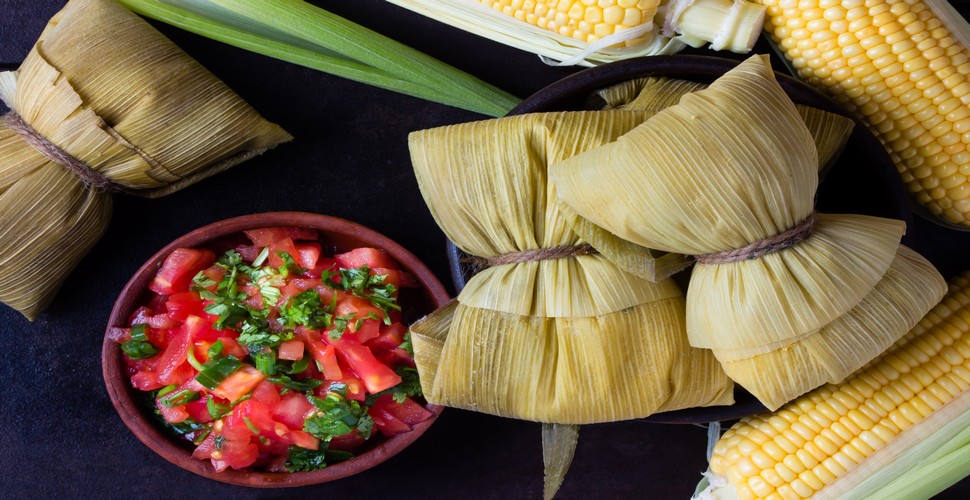
Argentine Humitas
Carbonada
Carbonada is a popular stew during Argentina’s winter months. It combines meat, potatoes, corn on the cob, carrots, peppers, and bacon and is topped with fruits like peaches, raisins, and pears. Once the mixture is prepared, carbonada is poured into a hollowed-out pumpkin, then barbecued. Its hearty flavor make carbonada a delicious Argentine food during the cold season.
Alfajores
Alfajores are small biscuit stuffed with different flavorings, usually made from crumbly shortbread. When the Moors traveled to Spain, they brought back delicious alfajor recipes with them. Alfajores can have various fillings; sweet jams, mousse, but they are usually dulce de leche filled sweet sandwiches. Argentinians enjoy eating alfajores for breakfast, dessert, and as a tasty snack throughout the day. Argentina consumes the most alfajores in the world. And Havanna alfajores are arguably the most famous brand of alfajores in the world. They are not just a snack, but a large part of the Argentine culture.

Alfajores
Dulce de Leche
Another sweet Argentinian food, dulce de leche translates to “milky candy” and is a must-try dessert.
Dulce de leche is made from sweetened, condensed milk. Combined with sugar, it creates a thick caramel and is also a popular ice cream topping. It’s often added to alfajores and dessert empanadas as an extra layer of sweetness. Whether you’re drizzling it over ice cream or licking it from a spoon, there’s no wrong way to enjoy dulce de leche.
Medialuna
If you head to an Argentinian coffee shop, be sure to pick up a freshly baked and delicious medialuna. The name comes from its “half-moon” shape and the buttery puff pastry similar to a French croissant, but is sweeter and smaller than typical croissants. Argentinians love eating medialunas for breakfast or as a light snack alongside a cup of coffee or tea.
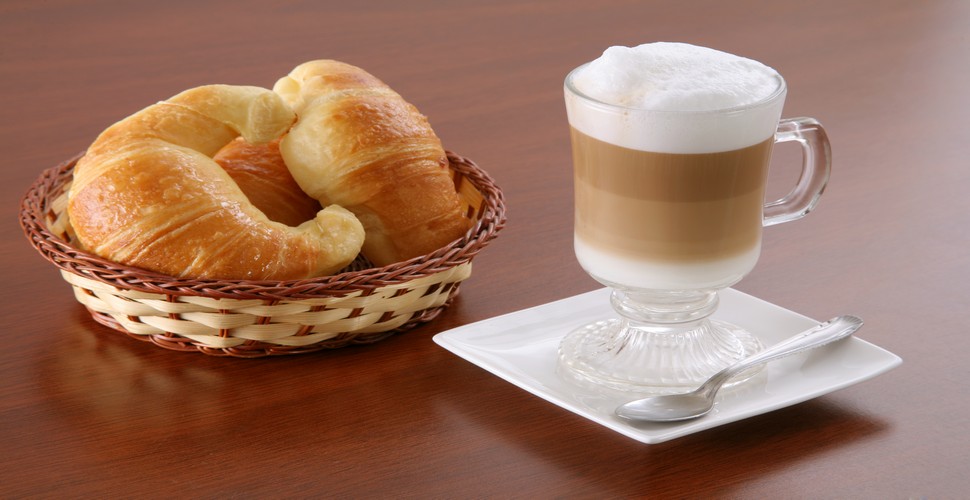
Media Luna
Yerba Mate
To finish off your meal, Argentinian -style you have to serve yerba mate!
Yerba mate is a bitter herb that comes from the holly genus plant and has high caffeine levels brewed like a tea. Its leaves are dried, chopped, ground into a fine powder and mixed with hot water. Yerba mate may also come as whole leaves. Traditionally, yerba mate is served in a gourd and sipped through a metal straw. It’s common to share yerba mate with friends and pass the drink around the table.













